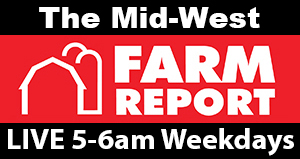
Spring on the farm means welcoming more animals to the herd; baby calves in mass are being born all over, bringing more cows into the barn and into production and more mouths around the farm to take care of. Kelsi Steffenhagen an animal nutritionist working with many dairy herds though out Wisconsin joined Bryant recently to talk about the common spring health issues that farmers can beat by just a little more attention to the feed the animals are consuming.
Kelsi says that Pneumonia is common this time of year and making sure the calves are vaccinated and have plenty of fresh clean water and high quality feed is important to keep calves healthy. Steffenhagen also points out that the use of corn stalks for bedding for younger cattle is a mistake as the animals can develop Clostridia which causes animals to be suddenly depressed, weak, may be distended or show abdominal pain and sometimes if not caught in time diarrhea develops.
When is comes to mature cows in production Steffenhagen reminds producers that we feed cows for two main reasons, production and maintenance and this year corn silage feed stocks are showing signs of lesser starch values so even though you think you are feeding enough starch for both production and maintenance you may be in reality shorting your cows in the ration, so having feed samples tested is advised. Steffenhagen says the lower starch values in the feed are due to our outstanding growing season last year the corn plants staying alive for an extra long time and then rapidly maturing, supplementing ground corn is an easy solution for low starch levels in your corn silage.
Listen to Bryant and dairy herd nutritionist Kelsi Steffenhagen’s interview by clicking the link below
